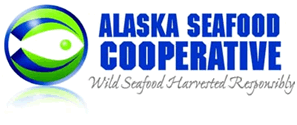Undercurrent News, June 15, 2016
By DJ Summers
Editor’s note: this story has been updated with exact numbers provided by Kurt Iverson.
KODIAK — A fishing tax rate glitch has new data that will increase state revenue in 2016, but the fix still needs work.
“I don’t think this issue’s going to go away,” said Kurt Iverson, a research analyst for the Alaska Department of Fish and Game.
Iverson said 2015 data has raised the price for formerly undervalued fish. The state won’t make the millions it believed the fishery is worth, but the aggregate tax increase is worth more than a half-million dollars.
“The state was thinking the loss was in the neighborhood of $1-$2 million, but it’s closer to something like $600,000,” said Chris Woodley, executive director of Groundfish Forum, an industry group comprised of the flatfish catcher-processors that target the species in question such as yellowfin flounder and Atka mackerel.
Following the June 15 publication of this article, Iverson had more specific numbers.
“The bottom line is a $787,295 increase,” wrote Iverson in an email. “Most of that ($626,960) was yellowfin sole. Then mackerel was $166,825. Rock sole went down by about $54,000 because the price dropped; flathead sole stayed the same; and turbot went up by about $40,000.”
Though the payments have risen for 2015 based on the new prices, Woodley agrees with Iverson’s outlook for a final plan to fix the rate for good.
“It’s a work in progress,” he said.
Woodley was one of several industry leaders with whom the state consulted to fix a tax glitch discovered in late 2015. According to state research estimates at the time, the state had lost out on $1.8 million to $2.5 million per year, or more than $10 million over the last five years.
The fishery resource landing tax levies a tax on fish that are landed in Alaska communities. Half the tax goes to the state and half to the community where it was landed.
The value, however, is based on ex-vessel price, or what fishermen receive at the dock from processors. Processors turn much of the flatfish caught as bycatch into low-value fishmeal, so the only known ex-vessel price for certain flatfish species is artificially low.
“The federal government faces the same issue when it tries to come up with economic analysis for the (North Pacific Fishery Management) Council,” Iverson said. “So they developed a formula to back calculate from the wholesale price.”
The state, Iverson said, submitted this formula to the Department of Revenue and was in the process of notifying industry when the Commercial Operator’s Annual Reports came out in April with the increase in ex-vessel flatfish value.
“Those former values were based on incidental instances of these species coming in and being ground up for fishmeal,” Iverson said. “The actual transactions for 2015 were not arm’s length transactions and the final products when into headed and gutted and frozen form that reflects the majority of the market. So prices went up.”
According to Commercial Operator’s Annual Reports, or COAR reports, processors paid an average of two cents per pound for yellowfin sole in 2014, and only a penny per pound in 2013. Atka mackerel must have had more shoreside action to raise its price from fishmeal, but still came in very low at 10 cents per pound in 2014 versus 2 cents per pound in 2013.
In 2015, these prices rose. Yellowfin sole sold for 9 cents per pound, and Atka mackerel sold at 19 cents per pound.
Last year’s ex-vessel prices reflected more dockside information, but that kind of activity is rare in the flatfish fishery to the extent seen last year.
“What if these transactions that increased the ex-vessel value don’t occur again?” said Iverson. “How do you prepare for that?”
The fallback, he said, will be to use the imputation formula derived from wholesale data the federal government uses. The calculation uses the total first wholesale product value, total round weight harvest, and a value reduction system of 0.4 percent to calculate true value.
The landings tax issue formed a backdrop to fisheries tax discussions in the House Finance committee.
Fishermen leery of proposed industry tax hikes said the state should maximize revenue where it can. Rep. Louise Stutes, R-Kodiak, who chairs the Fisheries Committee, said her committee would watch closely to see the matter is resolved.
